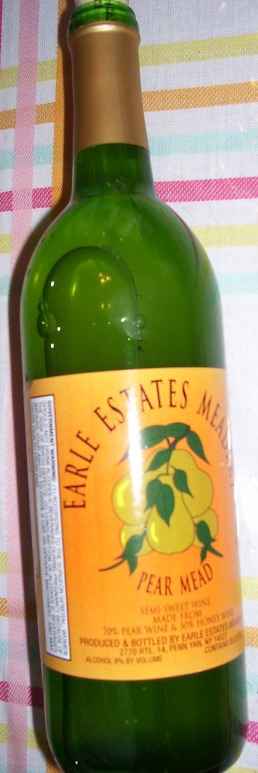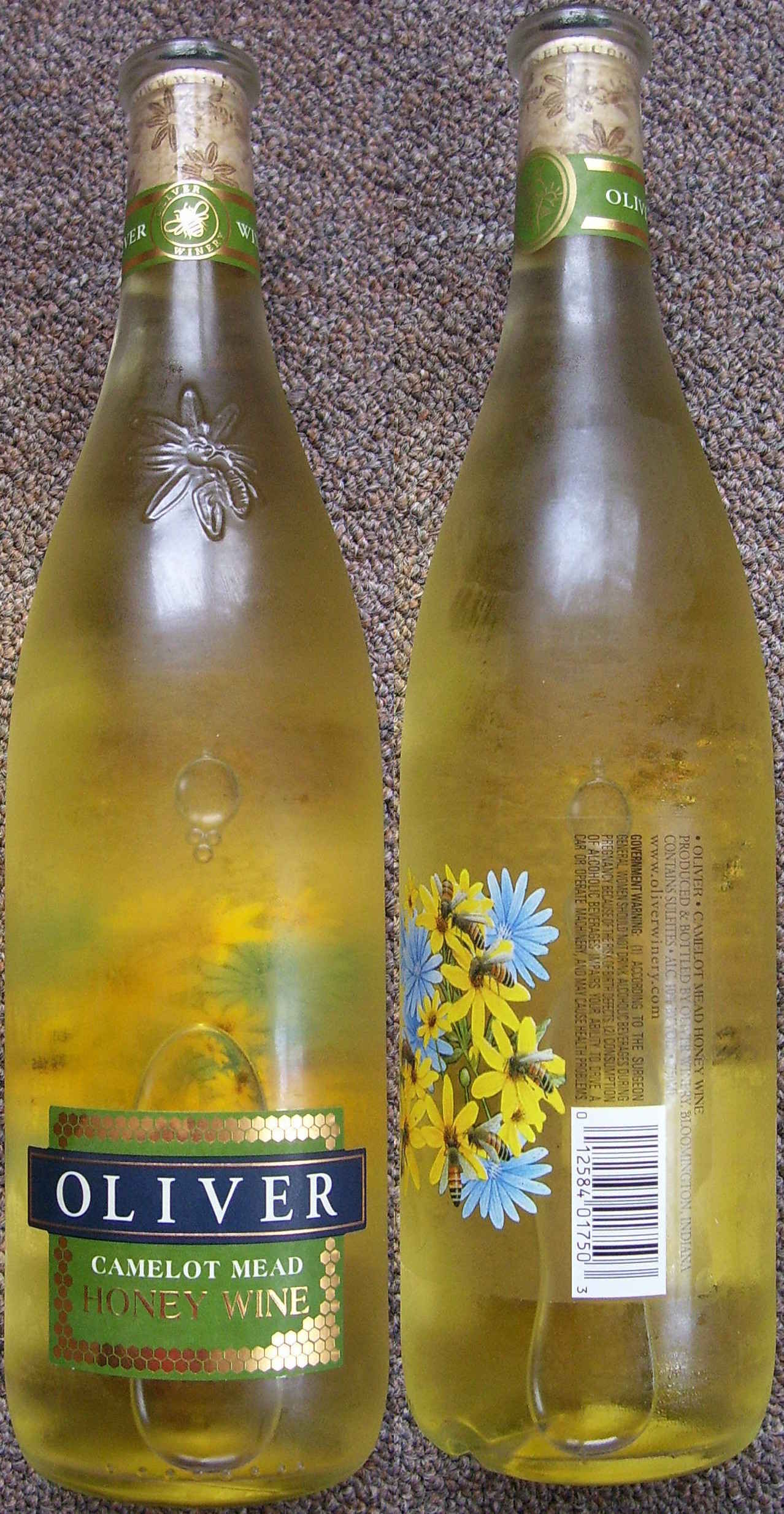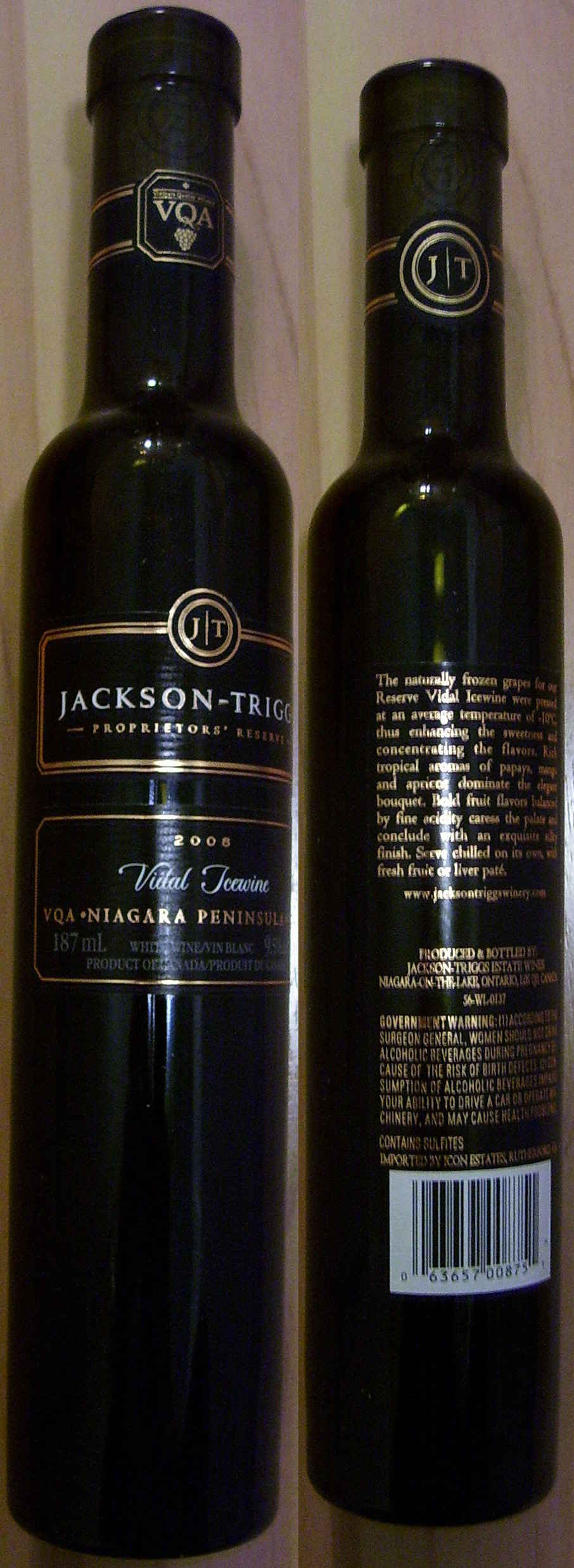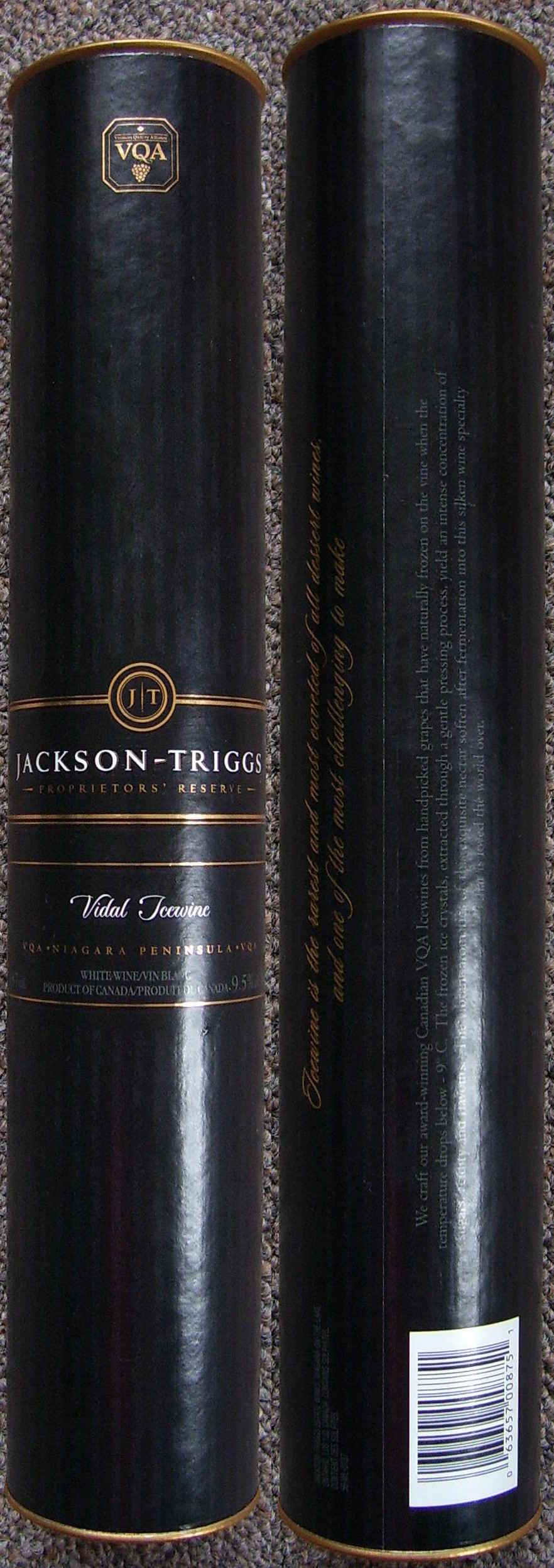Mead
Ratings of mead and fruit wines I have tried.
I rarely drink alcoholic beverages. Alcohol makes me sad and depressed, so any alcoholic beverage I drink despite the alcohol, and not because of. (The good thing about this is that I never need to worry about alcoholism, since in no situation would I want to be more sad and depressed.) As well, alcohol is expensive. It’s no surprise that I drink so much more tea—on a per-cup basis, it must be an order of magnitude or two cheaper! And teas are usually more tasty too.
As a kid, during some crab-eating, my grandfather gave me Budweiser beer; I found it unspeakably awful. I still do, and only now grudgingly tolerate artisanal beer. Whiskey tastes like oven cleaner. White wines are inoffensive (and hence not worth drinking), while red wines often have an interesting flavor but with punishing bitterness. Brandy is best used as flavoring in eggnog or hot chocolate. I have no opinion on vodka, and Jägermeister is just odd. Irish cream was too candy-like. I rather enjoyed the 2 ice wines I’ve had, but it’s rare and expensive. The Moscato dessert wines are probably some of my favorite wines.
Finally, I tried some mead, and that seems to be the stuff for me! It has a fringe-y reputation thanks to Renaissance Fair-types1, but mead tastes good regardless. The local liquor store had a blackcurrant mead, which was disgusting, an Irish regular mead which was good, and a regular American mead, which was a little lower in quality but still good.
Mead is not common, though, and being alcoholic and subject to countless burdensome regulations, mead is also pretty hard to get. I spent many hours searching for mead sources, and the upshot was that essentially no mead seller ships to New York State. This meant that the ~30 interesting-looking meads on Vinoshipper.com were useless to me. I thought of sending them to my grandparents in Maryland since I occasionally visit, but of the 30, only 2 varieties ship to Maryland! S&H doubled the price since they would ship separately! Well, that’s no good. I had heard of a local mead maker, the LI Meadery, so I turned eagerly to their website and learned… they closed a few months before after something like a decade of business. Gosh darn it! This left me one last source: Earle Estates Meadery. So I ordered 10 meads and a wine from them for a total of $196.
Mead
Earle Estates Meadery

The full collection certainly looks tasty.
My first batch:
Traditional honey mead (★★★★☆)
’01 Commercial Mead Champion, 5.0% RS. Similar to a Late Harvest Riesling. Pairs nicely with chicken, fish, pork, Chinese, lasagna, pasta, corn.
Strong mead smell with sharp aftertaste. Not that I’m complaining, I like the overall mead flavor. Tasty.

Earle Estates, traditional honey mead bottle
Cherry charisma (★☆☆☆☆)
Gold Medal, 5.0% RS. 30% Cherry Wine, 70% Mead. Great with chocolate, lasagna.
Light cherry flavor, not too sweet—flavor is identical to how it smells. (I don’t know why that struck me, but it did.) Persistent aftertaste. On further drinking, I’ve begun to reconsider my impression: it is too sweet when you are drinking more than a sip, and the cherry starts to taste more artificial and less like a real cherry.

Earle Estates, “Cherry charisma” mead
Strawberry shadows (★★★★★)
DOUBLE GOLD MEDAL, 6.0%RS. 30% Strawberry Wine, 70% Mead. Good with sharp cheese or for dessert itself. Pairs with fruit and whipped cream.
Immediate kick of alcohol, gentle strawberry taste—sort of creamy? No aftertaste. Tasty!

Earle Estates, “Strawberry shadows” mead
Blackberry blush (★★★☆☆)
6.0%RS. 30% Blackberry Wine 70% Mead.
Blackberry flavor is not very distinct. Sort of a generic fruity mead flavor, with little aftertaste.

Earle Estates, “Blackberry blush” mead
Honey mead semi-sweet (★★★☆☆)
Silver Medal, 8.0% RS. Light honey wine. Pairs well with fruit, cream and peanut butter desserts.
The Contemporary has a lighter flavor than the Traditional, dryer & not as sweet. Lesser aftertaste. Overall, there’s much less of an overpowering “mead” flavor to it which makes it taste more like a white wine. One might describe it as a “tamed” mead.

Earle Estates, Honey mead (semi-sweet)
Blueberry bounty (★★★★★)
Gold Medal, 7.0% RS. 45% Blueberry Wine, 55% Honey Mead. Great with prime rib, any beef dish, dessert, or on its own.
Similar to the blueberry wine, but both sweeter & sharper. The mead, no doubt. Tasty.

Earle Estates, “Blueberry bounty” mead
Black jewel (★★★★☆)
Gold Medal, 8.0%RS. Blend Of 30% Black Raspberry Wine & 70% Honey Wine.
Sweet, with no real alcohol burn. Tastes like blackberry much more than raspberry, lingering aftertaste & smell. Tasty.

Earle Estates, “Black jewel” mead
Twinkle mead (★★☆☆☆)
100% HONEY WINE, OUR FIRST SPARKLING MEAD, Very light delicate carbonation. A true delight!!
Didn’t try this one in the initial tasting—I decided to save it for some occasion since carbonated beverages don’t keep well after opening. Months later, I try it (after accumulating some spare corks I could whittle down to fit) to personally celebrate an accomplishment, since I had run out of the other 2 bottles I had with me. It’s… OK. I would not say great. It strongly resembles the Contemporary mead, but the flavor seems worsened by the carbonation—and it is, if anything, too sweet.

Earle Estates, “Twinkle” mead
Pear mead (★★★☆☆)
Double Gold, Best of Class, Best New York State Specialty Wine at 201115ya New York State Wine & Food Classic., 5.0% RS. Chairman’s Choice 200620ya—CA, 200422ya NYS Best Mead. 70% Pear Wine, 30% Mead. Pairs well with pork, chicken, cheeses, fresh fruit.
Sweet & sour simultaneously with an overall sharp pear taste. (I mean “sharp” in the same way foxy-tasting grapes are sharper than regular grapes.) Definite aftertaste. Not sure if I like it.

Earle Estates, pear mead
Creamy apricot (★★★★☆)
’01 Commercial Mead Champion, 5.0% RS. Similar to a Late Harvest Riesling. Pairs nicely with chicken, fish, pork, Chinese, lasagna, pasta, corn.
Relatively dry with a light flavor and light aftertaste. The apricot flavor is dominated by mead. Overall, I was reminded of white wines.

Earle Estates, “Creamy apricot mead”
For Christmas 201313ya, I was gifted another batch (3 new ones: Raspberry, Cranberry, Starlight; 3 old: Strawberry, Black Jewel, Contemporary):
Raspberry Reflection (★★★★☆)
RS 6%- 30% Red Raspberry Wine, 70% Mead. Absolutely Delicious! Gold 2013 Pacific Rim Wine Competition
It smells sickly sweet, but the flavor is tart (much like fresh-picked raspberries themselves can be), and overall quite tasty.

Raspberry mead, 201313ya bottle
Cruisin’ Cranberry (★★☆☆☆)
Gold Medal, ’02 NYS Best specialty Wine. 7.0% RS. Cranberry/Honey wine blend. Great with turkey & chicken.
I’m not a big fan of cranberries, but I hoped that I would be surprised. The flavor was weaker than ordinary cranberry juice, and there were no twists or improvements.

Cranberry mead, 201313ya bottle
Starlight Blush (★★★☆☆)
Silver Medal, 4.0% RS. Similar to “Zin”, but fuller bodied. Pairs with cheese or noodle bakes, chili, meatballs, mushrooms.
Oddly enough, neither the Earle website nor the bottle describe what Starlight Blush actually is. (Nor am I able to find out what “Zin” is—it doesn’t seem to appear on the website even checking back to 200620ya in the Internet Archive.)
Drinking it sheds little light. It’s clearly berry-based and has a bite almost like carbonation, but the flavor doesn’t immediately jump out as a particular berry. A blend? A combination of blueberry and raspberry might taste like this. (It’s sweeter than the Raspberry Reflection, so I suspect there’s no raspberry wine in it.) Not bad but puzzling.

Earle Estates, “Starlight Blush” mead
Oliver Winery
Camelot Mead Honey Wine (★★★☆☆)
This mead came as a gift from my aunt. I was quite surprised to taste it, as it did not resemble either of the Earle Estates straight meads (Traditional or Contemporary). The immediate flavor is a pure honey flavor, pretty sweet, minimal bite, and with little else until an alcoholic aftertaste (it’s 10% alcohol) shows up. On the fermentation spectrum, I assume these aren’t allowed to go too long. I wasn’t sure whether I liked it, but the flavor grew on me (even if I still think that the 2 Earles were more interesting on their own).

Camelot Mead, front/back
Carroll’s Mead
Carroll’s Mead ($16.34, 750ml; ★★☆☆☆)
An 8% alcohol NY mead branded for to the Renaissance Fair crowd. True to the label’s description as “sweet honey wine”, it is very sweet, only slightly golden, and has almost no bite. I found it bland and not really worth the $16 (price-competitive with the much better Earles). I can’t blame the assistant at the BIN 201 store where I bought it—she did warn me that she found it mediocre & worse than the meads she made for herself. But being so sweet and one-note, it might be good for people who have never tried any mead before, like people at a Renaissance Fair.
Black Heath Meadery
In Williamsburg Virginia in December 201511ya, I heard that a local meadery, the Silver Hand Meadery, had opened recently. When I visited, I learned that they had, in fact, opened so recently that they had not finished their first batch of mead and I could see it bubbling away in the giant white plastic inverted funnel-shaped tanks behind them. The titles sounded tasty but the meads wouldn’t be done until February.
Fortunately, they had on hand 3 meads from another Virginia meadery also opened recently, in March 201511ya (I guess mead is now a trend?), the Black Heath Meadery, which they let me taste. The bottles, incidentally, are nicely designed, with attractive labels and light honey-colored wax over the cork to continue the bee theme.
Passiflora (★★☆☆☆)
“Passiflora highlights the vibrant flavors of passionfruit and honey. It was produced for warm summer days and nights, yet provides a refreshing taste of summer anytime. Notes of mango, citrus and melon” Overly sweet, and I was underwhelmed by the passionfruit. I didn’t give it a second try.
Joy! (★★★☆☆)
A holiday spices themed mead (my batch, 1/293) “spiced with zest and juice from limes, lemons and oranges; vanilla bean; nutmeg; clove”. Somewhat sweet. I disliked it on first taste, but as I tried it more, it surprisingly grew on me. By the end of the bottle, I was appreciating it, though it’d never be my favorite.
Red Razz (★★★★☆)
Extremely dry, the Red Razz packs a major raspberry punch akin to Earle’s “Raspberry Reflection” which I also enjoyed a great deal. The absence of sweetness makes it a startling contrast to how raspberry is universally handled (as more sweet than raspberry), but it’s not tart so much as a clear essence of raspberry flavor.
Silver Hand Meadery
By June 2016, Silver Hand had started selling its mead and I got my hands on some:
Scarborough Fair (★★☆☆☆/★★★☆☆)
“Honey Apple Orange Wine with Natural Flavors and Spices”; “A walk through a fragrant herb garden on a misty morning. Scarborough Fair features delicate honey with rosemary and thyme, which combine to create perfect harmony in your glass.”
Attractive bottling similar to Black Heath’s, with a striking holographic Celtic knot adding pizzazz to the label on top of the silver bee. The mead itself doesn’t live up to the advertising: thin flavor with a generic spiciness. It improved as I got closer to the bottom of the bottle and the spiciness amped up, so my guess is that I should’ve been shaking it to ensure a more even distribution.
Dream by the Fire (★★★☆☆)
“Apple Cider Mead fermented with Spices”; “A courageous seasonal classic crafted with Virginia wildflower honey, freshly pressed Virginia apples, cinnamon, cloves, and allspice. Ignite your senses on a cold winter eve as you dream by the fire. Pairs well with honey coat cured turkey, Gouda cheese, dried apples, roasted hazelnuts, dark chocolate, and ginger cookies. May 2016”
More fiery than the Scarborough Fair or the hard cider I’ve tried, my first thought was ‘apple brandy’. I felt Silver Hand had again gone overboard on the spices, which masks the apple & cider (and I’ve started to wonder if they’re not confident in their mead).
All Blues (★★★★☆/★★★★★)
“Blueberry Mead with Spices. The epitome of freedom through beautiful constraint. Incredibly smooth like a 50’s modal jazz trumpet improvisation, this composition is created entirely in the mode of blue. Handcrafted with blueberry blossom honey and infused with blueberries in primary and secondary fermentation. It’s all about blues! Pairs well with grilled meats, pepper steak, aged Asiago or Romano cheese, blueberry scones, and fresh blueberries. July 2016.”
Virginia Moon traditional (★★★☆☆/★★★★☆)
A celebration of love and history, this Williamsburg, Virginia creation honors a tradition as reliable as the new moon. Each summer, honey bees gift a harvest of fine Virginia wildflower honey, continuing the legacy of ancestors brought to North America through colonies like Williamsburg. This traditional recipe, featuring Virginia honey, makes a perfect introduction to this historic drink and the Old Dominion where it is handcrafted. Visual – golden orange. Aroma – oak, floral, nut, fruity. Flavor – honey, oak, grape. Body – light. Finish – dry oak with a hint of toffee. Serve chilled. Pairs well with Virginia country ham, Asian BBQ, pan-seared seafood, pizza and aged Cheddars. Virginia Moon is inspired by the song Virginia Moon, a duet from the Foo Fighters and Norah Jones. We love the classic sound of this song, with the uncanny combination of musical artists from very different ends of the musical spectrum. Give this song a listen while you enjoy this new take on a Virginia tradition. Dry Traditional Mead / 500ml / Contains sulfites / Alc. 12.2% by vol.
Complicated and a little challenging.
Strawberry Swing (★★★★★) (Vinoshipper)
Strawberry Swing harkens back to the innocence and sweetness of childhood and the pure enjoyment of the simple things like sitting on a swing with someone special. Savor what is good … Visual – golden blush. Aroma – berry, roasted cocoa, vanilla, coffee. Flavor – strawberry, cherry, lime, and butterscotch. Body – medium. Finish – caramel Serve chilled. Pairs well with cheesecake, angel food cake, and fresh berries. Strawberry Swing is inspired by the song Strawberry Swing, from Coldplay. Semi-Sweet Melomel / 500ml / Alc. 12.5% by vol.
Stunningly good, blending a fiery mead with a subtle strawberry which is at least as good as Earle Estate’s Strawberry shadows. Silver Hand has improved its mead dramatically over just a few years.
Honey Brûlé (★★★★☆)
An ancient love longing to be remembered, blossoming in the scorched earth beneath an once active volcano. This reimagined medieval French recipe is characterized by caramelized honey, with aromas of cloves, vanilla, cherry, molasses, and oak. Each sip brings a touch of sweetness with a long finish that leaves you wanting more. Pairs well with steak, smoked cheese, and peach cobbler. Aged 5.5 months in bourbon barrels. Semi-Sweet Bochet; 500ml; Alc. 15% by vol.
Similar to my cousin’s earlier bochet, a golden caramel color greets you with an intensely alcoholic smell like a brandy. One would never guess it is a mead. The flavor is, I think, somewhat less rich and complicated than my cousin’s but as that was 2 years ago, it’s hard for me to know. Still good.
Raspberry Passion (★★★★☆)
Raspberry passion fruit mead: Raspberry Passion is a two-handed arpeggio between raspberry and passion fruit; a virtuoso fusion of sweet and tart flavors that flow as smooth as a guitar solo cranked up to eleven. Boldly be still and savor what is good. Pairs well with lemon cake, vanilla ice cream, and chocolate cheesecake.
August 2019,
Apis Mead & Winery
Peach Apricot (★★★★☆)
Light, fruity, and refreshing. Honey, peaches, and apricots paired together for a taste that is unmistakably Spring. 7% ABV Honey Wine with Natural Flavors 750ml Single Bottle
Acquired after a tasting of the meads at Apis Mead in Pittsburgh, Pennsylvania, and everyone agreed it was the best.
Pomegranate Rose (750ml) (★★☆☆☆/★★★☆☆)
Over the top aromas of freshly picked roses and rich, juicy pomegranates blends gracefully into the softness of the honey. We intend to preserve the natural flavors of the raw honey and never boil or filter our products. [medium-high sweetness]
Strawberry kiwi (750ml, 8.5% alcohol) (★★☆☆☆/★★★☆☆)
The problem with both the Pomegranate Rose & Strawberry Kiwi is that the mead flavor is minimal, leaving a flat fruit flavor. Drinking it tasted more like drinking a sangria—I had no idea it was a mead or fruit wine.
Blueberry Chai (750ml) (★★★★☆)
A fantastic pairing of ripe blueberries and fresh chai spices give this mead a particular uniqueness that is truly invigorating. We intend to preserve the natural flavors of the raw honey and never boil or filter our products. [medium sweetness]
Like the Earle Estates blueberries.
Fringe Meadery
Fringe Meadery (Portland, Oregon): Little Lord Fauntleroy / Sweet Mead / Fringe Reserve (★★★★☆) 500ml
reserve series / aged for beauty / Liquid decadence crafted from pure orange blossom honey. Entice your deepest senses with one sip of this seductive ambrosia. Aged 18 months in stainless steel barrels. 13.8% alc. by vol
Fringe Meadery doesn’t seem to document its offerings anywhere, so I am left guessing about what the name of this bottle is. (Is Little Lord Fauntleroy the mascot/icon, the name of this specific bottle type, the name of their pure-honey offerings in general, or what?) In any event, the mead is excellent in the vein of the Earle Traditional with a rich complexity and sharp somewhat-licorice-y aftertaste (but sweeter).
Miscellaneous
2016 “bochet” mead (★★★★☆)
My cousin is interested in all things fermentation and has, in addition to his beer brewing, occasionally experimented with making mead. The first one of his was, unfortunately, so bad that I tossed it (the flavor was not present and I suspect something went wrong with the yeast), but his second one was different. When I first tried it, I was flummoxed as to what it was and hazarded a guess that it was a brandy wine like a cognac such as Grand Marnier. I was shocked to learn that it was a mead because the rich licorice flavor was unlike any mead I’d tried before and I enjoyed it a great deal.
Unfortunately, bochet meads are rarely sold commercially, so it’s fortunate my cousin decided to try them out; also fortunately, if I do ever try out making my own mead, bochet meads do not seem to be expensive to make—the key step is boiling the honey to caramelize it, which, while adding the characteristic bochet flavors, also tends to destroy any special qualities of the honey, so one can probably get away with using cheaper honeys. (Additional flavoring comes from vanilla beans and other spices added to it.)
Nectar Creek: Waggle Wildflower Session Mead, 50ml/$8 (★★☆☆☆/★★★☆☆)
The complex essence of Oregon wildflower honey is captured in this session mead with flavors and aromas of ripe fruit and fresh honeycomb.
Relatively sweet and carbonated, but a flat simple flavor without the complexities I associated with the contemporary or traditional Earle Estates meads. Beer bottle style rather than wine bottle (the cap is hard to put back on, which is annoying).
Fiddler’s Ridge Farms & Winery: Buzzin’ Bee, Wild Flower Honey Wine: 750ml, 12%, $18.95 (★★☆☆☆)
Bought in a Florida restaurant, made by a Florida meadery with Florida honey. Relatively sweet. Little complexity to the flavor and struck me as ‘off’ somehow, leaving a bad impression. I tried it simultaneously with a Carroll’s Mead and wasn’t impressed by either but thought the Carroll’s Mead was a bit better.
Fruit
Earle Estates Meadery
Blueberry wine (★★★★★)
Gold Medal, 7.0%RS. Made from 100% NYS Blueberries! Great with beef dishes, especially with a tomato sauce, cheesecake.
Not actually a mead, but it looked tasty so I ordered it, and I have no “Wine” page, so I cover it here. This blueberry wine turns out to taste exactly how one would expect ‘blueberry wine’ to taste. The flavor isn’t overpowering, and it has a contrasting sharp aftertaste. Tasty.

Earle Estates, blueberry wine
Dessert Wines
Jackson-Triggs
Vidal Icewine (★★★☆☆)
Ice wine is very expensive on an unit-basis; this 2008 bottle would cost ~$27 for 187ml, so in comparison to a more normal 750ml bottle, it’s somewhere around 4x expensive. Which on the signaling theory of gifts, makes it an excellent gift since anyone who has looked at the price will know that a fair bit of money was spent on it. But it also means I rarely get to try any since I can’t justify spending that much on ice-wine when I could buy 4x mead with that money, or buy several times that in tea.
(Looking at a price history of Vidal Icewine, I was surprised to see that the price doubled in 200917ya, which apparently was a good year in general for Ontario wines but a terrible one for ice-wine with that harvest a quarter the 200818ya size—so perhaps one could say that ice-wine is a liquid countercyclical asset, which ought to be in high demand by any wine hedge fund!)
The manufacturing of ice-wine is romantic, and it delivers: this was sweet, too sweet for most of the people who tried it. One sips it slowly. Besides the intense sweetness, there is a sort of fruity (not grape-y) aroma I don’t generally associate with white wines which is interesting.

Small bottle of ice-wine, front/back

The ice-wine storage tube
Domaine Neige
Domaine Neige, Ice Cider Premiere (375ml, 12% alcohol, $20-30) (★★★★★)
Autumn harvest McIntosh/Cortland/Spartan apples; 375g/l sugar at harvest, 160g/l residual. Apple compote. Intense. Crisp, flavorful attack. Perfect balance of sugar and acidity. Solo or with cheese and desserts. 43F, serve cold. Excellent now but great aging potential (2 months),
Produced in Quebec, Canada. Ice cider is, as the name suggests, hard cider produced along the lines of ice wine: the apples are harvested and left until winter, concentrating sugars (as suggested by the ABV—twice that of any hard cider I’ve had recently) without the use of explicit distillation like freeze distillation. Surprisingly, “ice cider” appears to only date to a few decades ago and remains closely associated with Domaine Neige. Unfortunately, like ice wine and for the same reason, it is considerably more expensive by unit.
After watching My Little Pony: Friendship is Magic, I became curious about what applejack tasted like—a classic bit of Americana and cider culture, hard cider which has been “jacked” up by freezing—but I was unable to find any and it’s unclear if it’s produced at all anymore. (My cousin suggested that this was because freeze distillation gives poorer control over the more undesirable and dangerous alcohols produced by fermentation, which in other processes are easy to discard as they are the first to come out of the still etc while in freeze distillation they would remain mingled, but as far as I can tell, this is not a serious health concern.) Ice cider is close to how I imagine it would work: indeed, the only difference seems to be the timing of when the apple juice is frozen, so I question calling it “ice cider” at all rather than applejack.
The packaging is pretty & emphasizes the winter/Canada connection. The flavor is intensely apple-like, both sharp and sweet. A little goes a long way served with ice to keep it chilled. The rich flavor has caramel notes and I’m reminded of both my cousin’s bochet mead & brandy. It is fantastic. I just wish it were not so expensive! An ice cider habit would get costly quickly.
They’re generally nice harmless folks, and I enjoy some anachronisms myself like martial arts; I’m just pointing out that “mead” is something of a punchline or joke.↩︎